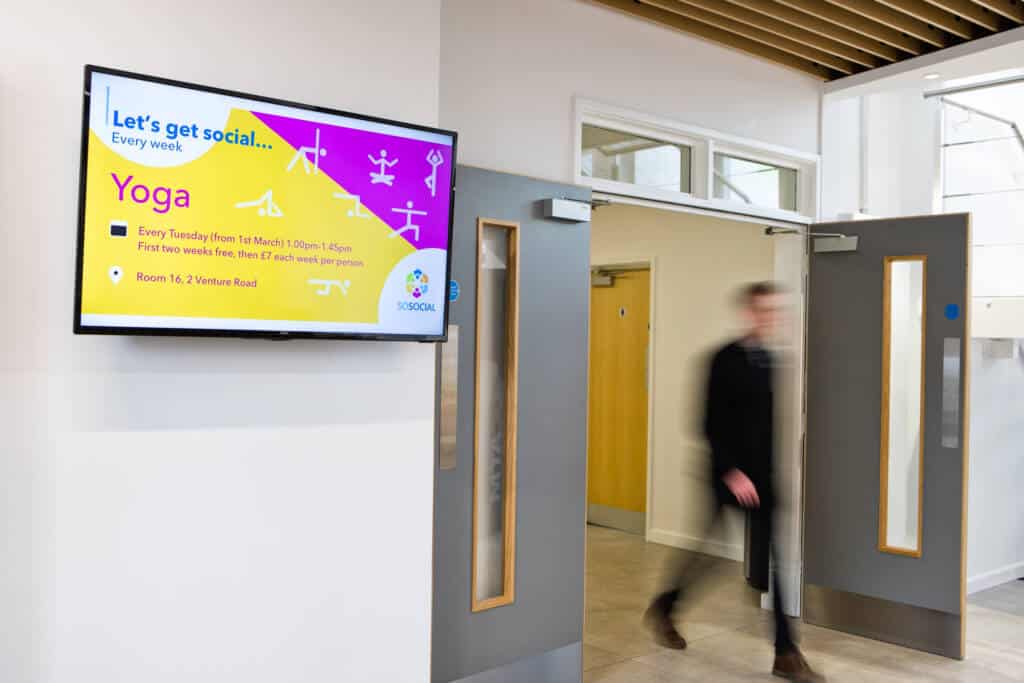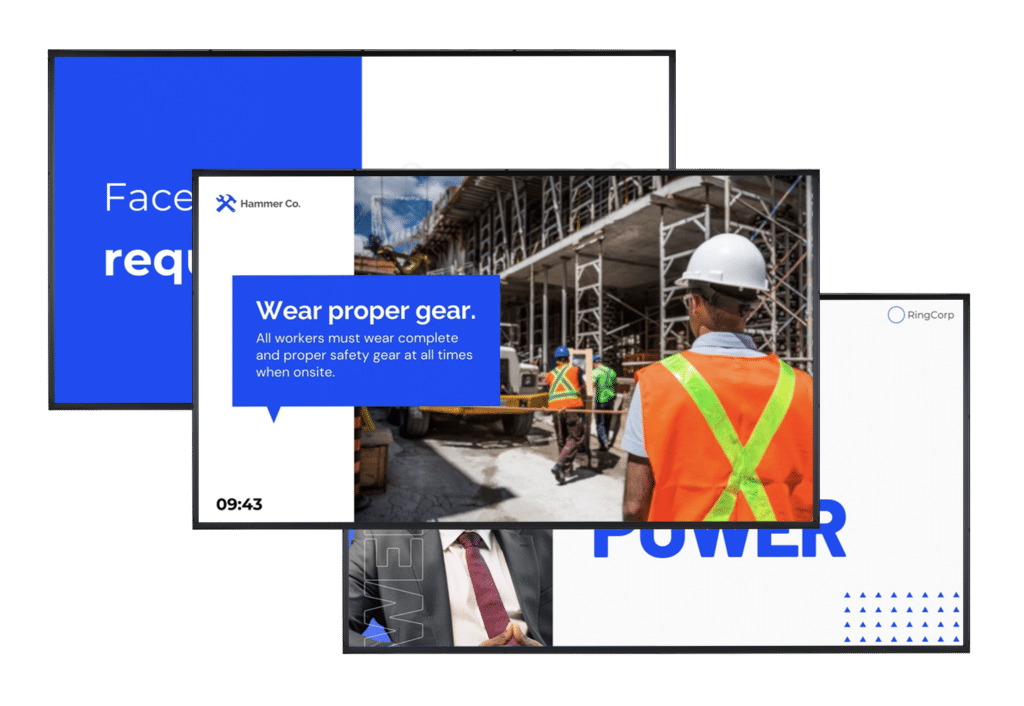According to an Indeed UK Work Wellbeing study, 26% of UK employees are not satisfied with their job. Low employee satisfaction can lead to underperforming teams, less-engaged employees, increased staff turnover, and low productivity. Learning how to improve employee satisfaction is critical for organisational success.
Benefiting both the employee and employer, employee satisfaction levels take into account a variety of factors including how an employee’s job role impacts their overall emotional and physical wellbeing.
This blog will teach you how to improve employee satisfaction within your organisation. You will also understand the importance of increasing employee satisfaction as we explore the impact it can have on organisational health.
What is employee satisfaction?
Employee satisfaction signifies the level of contentment and fulfilment that employees experience within their work environment. It conveys how satisfied employees are with various aspects of their job including compensation, work-life balance, relationships with collogues and supervisors, growth and development opportunities, and the overall job conditions.
It is important to have high levels of employee satisfaction. When employees are satisfied and fulfilled within their job role, they are more likely to be motivated, engaged and committed to their work. Therefore, maintaining and increasing levels of employee satisfaction is vital. Low employee satisfaction can wreak havoc on organisational success impacting productivity, employee turnover rates and overall company performance.

What are the benefits of employee satisfaction?
Learning how to improve employee satisfaction reaps a number of benefits. Along with being satisfied in their job roles, employees are more, motivated, productive and engaged. This results in a higher standard of work and a more committed workforce. High levels of satisfaction within a job role also enhance loyalty to the organisation, reducing turnover rates. Employee satisfaction encourages positive work culture and teamwork resulting in a collaborative group of employees who achieve more together. Overall, committing to increasing workforce satisfaction leads to high-performing, motivated teams that drive organisational success.
Benefits of employee satisfaction:
- Increased productivity.
- Enhanced teamwork and collaboration.
- Loyalty to business.
- Positive workplace culture.
- Reduction in employee turnover.
- Increased profitability.
- Motivated workforce.
- More engaged employees.
- A higher standard of work.
How to improve employee satisfaction
There are a number of ways to improve employee satisfaction. Below, are 7 ways to boost satisfaction levels among employees:
1. Promote a work-life balance
24% of employees admit it’s difficult to relax outside of work. Ensuring a strong work-life balance is crucial when striving for a productive, engaged, and satisfied workforce. Ensuring a strong balance between work and personal life prevents burnout and improves overall well-being by allowing employees time to recharge and work on their physical and mental health.
Providing employees with proper time to rest and have a break from work enhances their overall productivity and assists them in prioritising tasks effectively. This aids employees to be more focused and motivated, resulting in increased employee satisfaction.
How to promote a work-life balance:
- Offer reasonable work hours.
- Flexible work hours.
- Provide wellness programs supporting work-life balance.
- Provide remote work and hybrid options.
- Create policies allowing employees to take time off work when needed – such as parental leave, family and medical leave, bereavement leave and mental health days.
- Set up regular 1-1 meetings with employees to make sure they are happy.
- Ensure guidelines are followed for contact outside of working hours.
- Hire enough employees to ensure there is sufficient resource in-house to complete projects.
By valuing the needs of your employees and respecting their work-life balance, they will feel appreciated and are more likely to be satisfied with their job.

2. Prioritise employee well-being
Happy workers are 13% more productive. Therefore, similarly to promoting a work-life balance, it is important to prioritise employees’ overall well-being. In doing so, burnout is prevented and employees are supported to work to the best of their abilities.
When prioritising well-being, productivity and overall work standards are increased as it aids concentration and motivation levels. Well-being can be supported through encouraging work breaks (which help reduce stress levels) and through adopting a positive attitude toward both mental and physical health. This can be achieved through offering access to wellness activities including fitness and social schemes, inspiring employees to prioritise their wellbeing. Employees can also receive effective support through employee assistance programs that provide confidential counselling and other support services that help employees with both personal and work-related challenges.
How to improve employee well-being:
- Encourage work-life balance.
- Support mental health – offer mental health support such as providing employee assistance programs (EAP).
- Promote physical well-being – provide accessible fitness facilities.
- Encourage regular breaks and time off – provide reasonable lunch/break hours and offer mental health days.
3. Provide opportunities for growth
Ensuring employees have opportunities for growth and development can help aid satisfaction levels as it allows them to expand their skills and progress within their job roles. Therefore, a sense of purpose is created, encouraging employees to engage in their work and ‘go the extra mile’.
Providing a clear pathway of career development, with stepping stones, alongside constant feedback and regular performance evaluations enhances productivity levels and creates a driven workforce that is loyal. This results in reduced turnover rates as employees are less likely to seek employment elsewhere when satisfied within their job role.
Ways to encourage growth and aid employees with opportunities to develop include organising team-building activities,
- Skill development workshops.
- Industry conferences.
- Provide internal training programs.
- Offer external training.
- Have clear pathways for advancement.

4. Encourage a Social work environment
60% of employees claim colleagues are the biggest contributor to job happiness. A social work environment encourages positive interactions between employees and will build a sense of community within the business, resulting in an enjoyable work environment. This creates a communitive and supportive team where employees feel valued and appreciated. As a result, employees are encouraged to share knowledge and ideas.
A social work environment can be encouraged by organising frequent team-building activities where employees can build relationships and gain new skills, creating a physical workplace where collaboration can be facilitated.
How to encourage a social work environment:
- Communitive seating areas.
- Team-building activities.
- Celebrations and social events – organise team building activities, company outings, or social gatherings. This will help employees to build relations with one another, resulting in a stronger workforce.
- Promote peer-to-peer recognition – Sourcing opportunities for peer-to-peer recognition encourages a culture of appreciation and will enforce a social work environment. Regular team meetings and a communal appreciation box are some ideas to enhance this. It will give employees the platform to give shout-outs to peers and form a positive environment.
5. Recognise employees’ work
Honouring employees’ work efforts through recognition allow them to feel seen and act as a major motivator, boosting self-esteem levels and work drive.
Acknowledging employees’ work efforts enables them to feel recognised and appreciated. Receiving praise along with regular feedback enforces the importance of employees’ work, driving them to perform to the best of their ability. Studies found that 80% of Employees would work harder if they felt better appreciated. This results in a higher standard of work as employees become more driven to receive praise and become more confident in their field of work.
Receiving regular feedback stimulates growth within one’s business as employees have a clear understanding of where improvements are required and where they’re improving. Regular feedback and constructive criticism will allow employees to work on those improvements, building on their own personal skills. This will result in a stronger workforce.
Recognise your employees through:
- Verbal praise – Voicing appreciation through verbal praises such as “Good work!” and “Well done on the recent project” increases morale, raises employees’ spirits and creates a positive work environment. It creates a sense of appreciation and value for their work enhancing the spirit amongst individuals and teams.
- Regular feedback – Offering employees regular feedback through frequent assessments and regular performance evaluations supports their career growth. Provide constructive feedback and praise on what went well in their work. Ensuring to note how it positively impacted the team or organisation whilst helping them improve their performance levels.
- Public recognition- Highlight employees’ achievements in team meetings, company announcements, digital bulletin boards and newsletters. In doing so, a sense of pride and recognition is created. Additionally, employees will experience enhanced self-esteem levels, increasing satisfaction rates.

6. Reward work
Rewarding achievements benefits both the employee and the business. Rewards increase satisfaction levels among employees as their accomplishments are recognised. Therefore, employees are more likely to develop a sense of loyalty to the organisation. Not only will this encourage them to be more committed to their work but also to stay on long-term as employee dissatisfaction results in seeking employment elsewhere. Additionally, the business will benefit as employee-turnover rates are decreased. This will save costs and a respectable reputation is gained, attracting talent and other job seekers.
Reward employees through:
- Promotions.
- Incentives.
- Bonuses.
- Trophies
- Employee of the month/quarter/year awards.
7. Listen to your employees
Giving your employees a voice results in a level of respect between themselves and the employer as they feel valued and respected.
Actively listening to employees and taking action to address concerns allows them to feel seen and validates their thoughts.
Encouraging employee feedback and involvement opens up the opportunity to seek feedback and take on new ideas. Not only is it beneficial for both the employee and employer but to the overall business too, as it encourages development and engagement resulting in a growing business. This can be encouraged by providing employees with various outlets and opportunities to voice their thoughts and opinions. This can be aided by creating channels for feedback that are accessible to employees including; regular surveys, suggestion boxes and town hall meetings.
How to listen to employee feedback:
- Frequent team meetings.
- Frequent 1-1 meetings.
- Feedback surveys.
- Feedback screens.
- Suggestion boxes.
Remember, it’s equally important to act on feedback as well as listen to it. Let employees know their feedback is valuable and has been acted on.

How to improve employee satisfaction with digital signage
Digital Signage is where screens are used within organisations to engage employees with key messages. In most cases, the internal communications team will use digital signage software to create and deploy important messages (safety information, live data dashboards, corporate messages/alerts, schemes) to a network of screens across the organisation.
But how can digital signage be used to improve employee satisfaction?

Feedback
Screens can be used both for receiving employee feedback, and for displaying the results.
Gaining feedback
Interactive digital screens can be used to allow employees to leave feedback by filling out interactive surveys.
Traditional internal communications screens can show QR codes that encourage employees to visit the link associated to fill out a survey. When the employee scans the QR code, they are taken to a feedback survey on their phone.
Displaying results
When your employees are taking the time to provide feedback, it’s important to show and celebrate the results.
Share feedback on your digital signage displays across your organisation and (with permission) celebrate the employee who gave the feedback.
Sharing results and outcomes from feedback is not only going to lead to more satisfied employees but increases the chances of others leaving feedback. Explore launching a ‘what you said and what we did’ program.
Promoting company socials
Team/company socials are better when everyone goes.
Ensure employees are aware of socials by placing friendly reminders on screens before the social takes place. Be sure to include where and when the social is happening to increase chances of attending.
If employees need to book onto the social, consider adding a QR code.
Highlight well-being initiatives
Earlier, we discussed the importance of implementing well-being initiatives. What’s even more important is that your employees know about them, so they can utilise them.
Consider displaying digital signage content that covers what well-being schemes are on offer, how to use them, who to speak to and more. Be sure to make well-being schemes attractive and easy to access to increase their use.
Employee recognition
Celebrate employee and team achievements on screens around your organisation. Shout from the rooftops how well your employees are performing and how they’re helping the organisation achieve its goals.
Employee recognition has a number of great benefits including increasing productivity, motivation, and profitability.

That’s a wrap! Now you know how to improve employee satisfaction at your organisation and how to amplify it with digital signage. If you have any questions about how to use screens to forge a happier workforce, speak to our team today!
